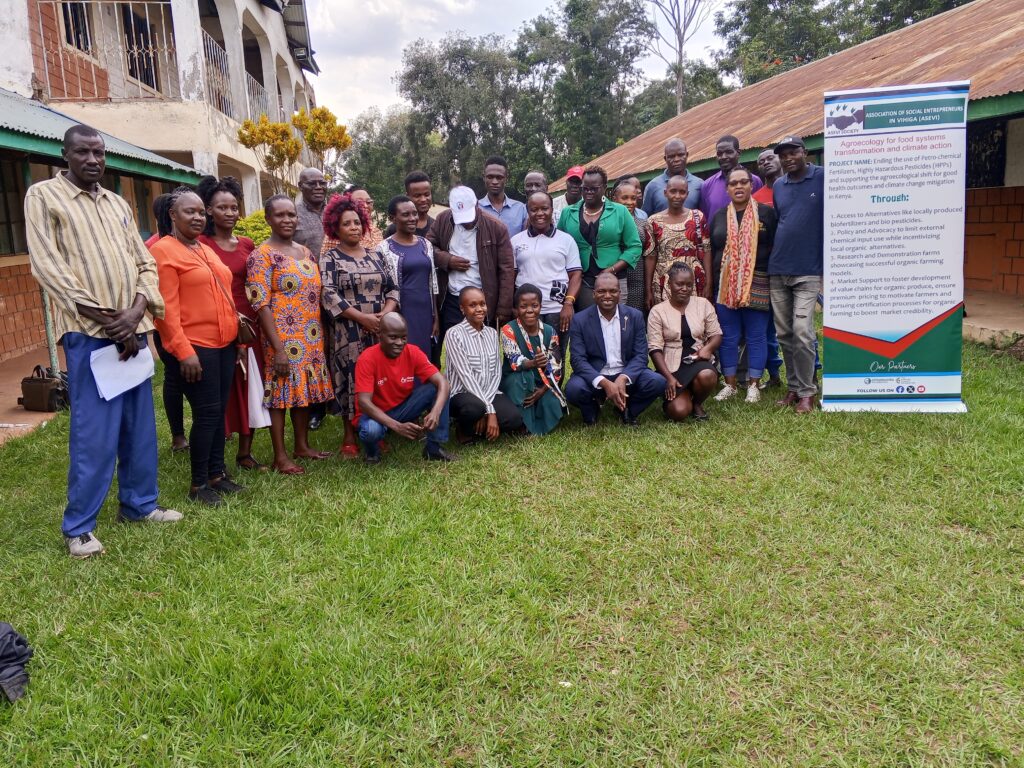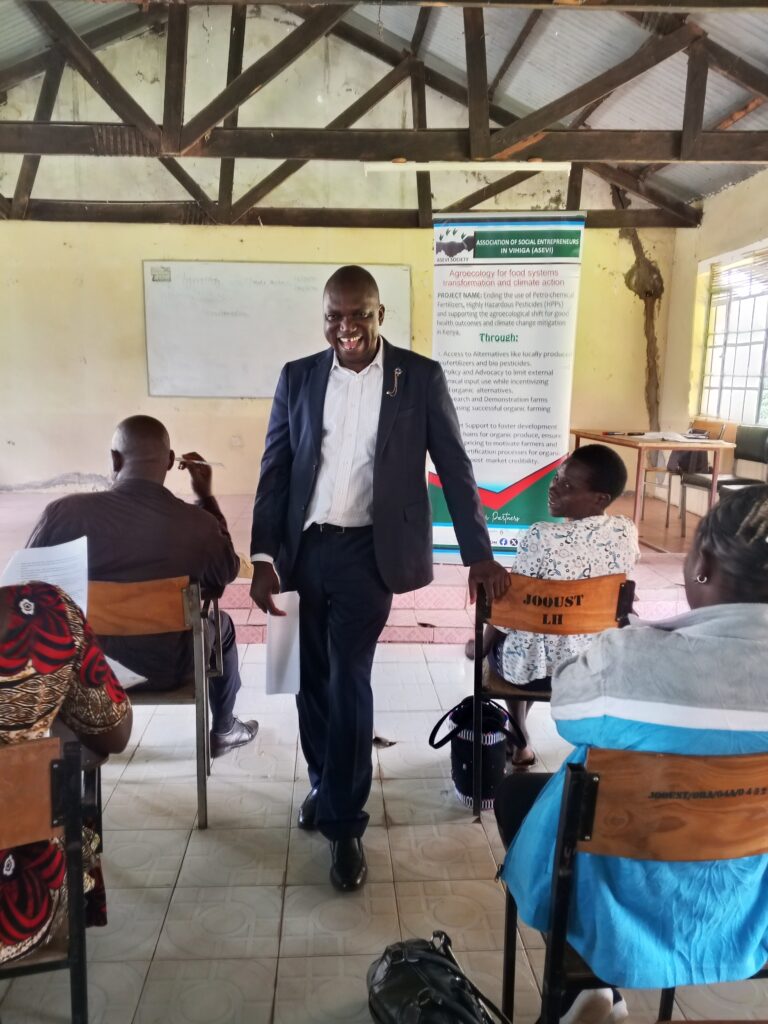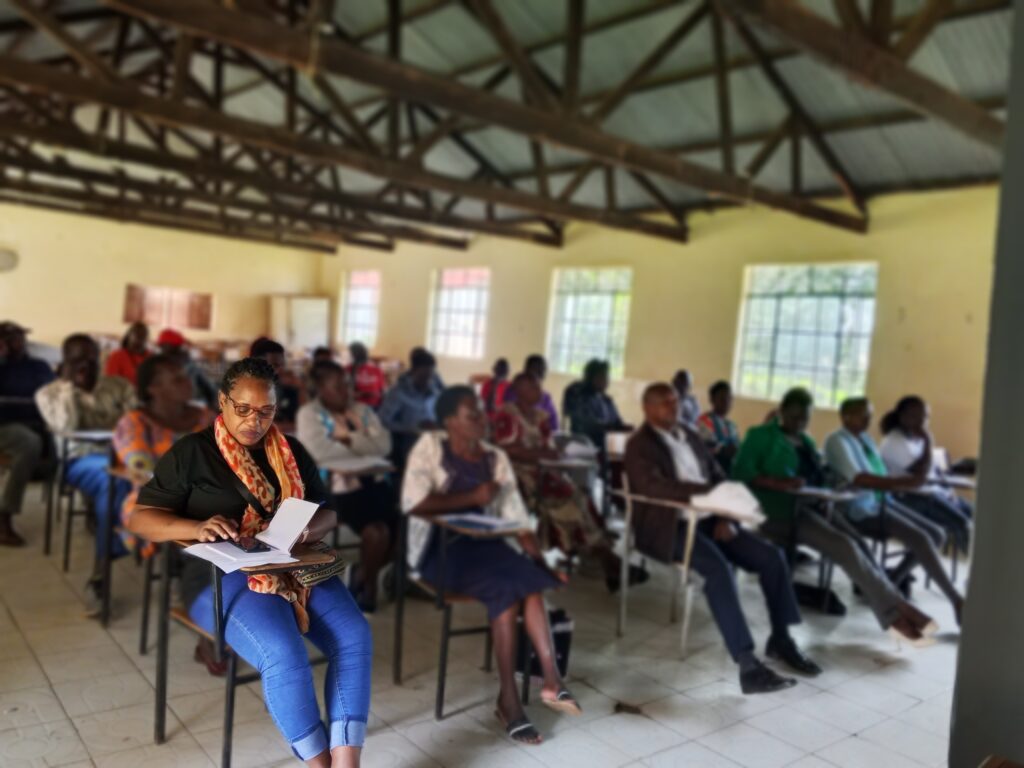Busia County, Kenya – walk through the vibrant, rain-fed fields of Western Kenya, and you’ll witness an agricultural landscape in profound flux. Busia’s farmers, long defined by subsistence maize plots and the now-crumbling legacy of sugarcane, are quietly leading a revolution. Faced with a perfect storm of climate shocks, soaring input costs, and market instability, they are turning back to move forward – embracing agroecology not as a relic, but as the vital pathway to resilience, food sovereignty, and a sustainable future.

Beyond Subsistence: The Agroecology groundswell
The transition is palpable. While challenges loom large – the sugarcane crisis, fragmented land, persistent climate vulnerability – Busia is far from passive. A powerful momentum is building, driven by necessity and nurtured by deep-rooted knowledge:
- Informal Wisdom, formalizing: Across countless smallholdings, farmers are weaving agroecology into their daily practice. Intercropping maize with resilient beans and sorghum isn’t just tradition; it’s a calculated risk-spreading strategy. Saving indigenous seeds and nurturing soil with homemade compost aren’t just frugal; they’re acts of defiance against expensive synthetic inputs.
- Science meets soil: Innovations like the remarkable Push-pull technology are taking root. By strategically planting desmodium and napier grass, farmers are winning battles against devastating stem borer pests and striga weed, simultaneously boosting maize yields and soil fertility – a win-win forged by ecological understanding.
- Diversification as defense: The old mono-culture model is fracturing. Farms are becoming dynamic mosaics: vegetables flourish alongside grains, poultry scratch near goat pens. This biodiversity isn’t just picturesque; it’s a biological shield against pests, disease, and market fluctuations, while enriching diets.
- Holding the earth: On slopes vulnerable to Lake Victoria’s increasingly erratic rains, farmers are building terraces and planting cover crops like mucuna. This isn’t just erosion control; it’s an investment in the very foundation of their future productivity – the soil.
Why Agroecology? The unavoidable drivers
This shift isn’t ideological whimsy; it’s a pragmatic response to harsh realities:
- Climate’s relentless bite: Erratic rainfall, devastating floods, and prolonged dry spells – amplified by proximity to Lake Victoria – make conventional, input-heavy farming a gamble. Agroecology builds buffers into the system.
- The crushing cost of inputs: With synthetic fertilizer and pesticide prices soaring, the low-input, knowledge-intensive approach of agroecology offers an economic lifeline, especially for resource-poor farmers.
- Reclaiming cultural heritage: Agroecology isn’t alien; it resonates. It aligns with and revitalizes generations of accumulated indigenous knowledge about pest management, seed selection, and ecological balance.
The Uphill Climb: Systemic hurdles remain
Despite the groundswell, Busia’s agroecology revolution faces formidable barriers:
- Policy paralysis: Kenya’s progressive *National Agroecology Strategy (2024-2032) *is a beacon, but its light dims at the county level. Implementation is hampered by chronic under-funding and a lack of technical capacity within count governments. The gap between national vision and local action yawns wide.
- The market mirage: Where does the farmer sell certified organic sorghum or pesticide-free kale? Premium markets are scarce, and support for organic certification – crucial for capturing value – is virtually absent. Agroecological produce often gets lost in the conventional commodity stream.
- Land squeeze: With one of Kenya’s highest population densities (~500 people/km²), farm fragmentation is extreme. Scaling agroecological practices beyond the homestead plot requires innovative, cooperative models.
- The subsidy siren song: National programs like the well-intentioned subsidized synthetic fertilizers program creates a powerful counter-current, pulling farmers back towards the very systems agroecology seeks to transcend.
- Knowledge in fragments: County extension services, historically geared towards conventional monocropping and chemical inputs, struggle to deliver coherent, consistent agroecological training. Farmer-to-farmer networks fill gaps, but systemic support is lacking.
Planting the Future: Seeds of hope
Yet, hope is not just sprouting; it’s taking firm root:
- Youthful energy: A new generation sees agroecology not as a step backward, but as a forward-looking, tech-savvy, and entrepreneurial venture – from urban micro-gardens to value-added organic processing. They are the essential catalysts for scaling.
- Climate finance potential: The global urgency around climate adaptation opens doors. Busia’s agroecological transition is a prime candidate for support from mechanisms like the Green Climate Fund – funding that could break through infrastructure and capacity bottlenecks.
- Political will & farmer power: The County Government’s active promotion of diversification (oilseeds, horticulture, dairy, cotton) and value addition, coupled with the palpable engagement of farmers’ groups like the Busia Small Scale Farmers Association, provides a crucial foundation. Initiatives like the recent Focus Group Discussion convened by the Association of Social Entrepreneurs in Vihiga (August 1st, 2025, Nambale Town) are vital – bringing together farmers, paralegals, vendors, and stakeholders to strategize on making agroecology the pathway for food system transformation and climate action.

The Harvest Ahead: A Movement in Bloom
“Agroecology in Busia County is transitioning from fragmented practices to a more organized movement, driven by necessity and local advocacy.”
The status of agroecology in Busia is one of dynamic transition. It’s moving beyond isolated acts of resilience towards a coordinated, county-wide movement. The momentum is real, fueled by environmental necessity, economic pragmatism, and a resurgence of cultural wisdom. The challenges – policy inertia, market access, land pressure – are systemic and require systemic solutions.
Success hinges on decisive action: Integrating agroecology into Busia County’s budget priorities; forging robust market linkages that reward ecological practices; realigning national subsidy programs to support, not undermine, the transition; and massively investing in cohesive, accessible agroecological extension services.
Busia County stands at a crossroads. The path of agroecology offers more than just survival; it offers the promise of thriving rural communities, restored landscapes, nutritious food, and genuine resilience in the face of a changing climate. The seeds are sown. With sustained commitment from farmers, government, development partners, and consumers, Busia can cultivate a harvest that nourishes both its people and its future.
What can YOU do?
- Support local (territorial) & organic: Seek out and buy produce from agroecological farmers in your area or nearby.
- Advocate: Raise awareness about the importance of county-level agroecology policy implementation and funding.
- Engage: Support organizations (like Busia Justice Centre and ASEVI working directly with Busia’s farmers.
The revolution isn’t just in the fields; it’s on our plates and in our policies. Let’s help Busia reap what it sows.


Great work
Noticing impactful farming changes to the county that had been facing economic hurdles is attributed to organization’s alignment or rather commitment to its mission and good leadership.ASEVI with its able leader Mr Evans is the reflection of this.Thank you so much sir for initiating the rebirth of Busia county through agroecological principles
This is an insightful and timely reflection on the evolving agroecology movement in Busia. The recognition that fragmented efforts are now shaping into an organized, county-wide approach is encouraging.
Agroecology is not just a farming method it’s a pathway to dignity, food sovereignty, and climate resilience.
I particularly appreciate the call for systemic solutions like budget prioritization, market linkages, and supportive policies. Without these, the efforts of farmers and advocates risk being undermined by structural barriers.